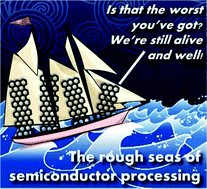High vacuum synthesis and ambient stability of bottom-up graphene nanoribbons†
Abstract
Carbon-based nanomaterials such as graphene are at a crucial point in application development, and their promising potential, which has been demonstrated at the laboratory scale, must be translated to an industrial setting for commercialization. Graphene nanoribbons in particular overcome one limitation of graphene in some electronic applications because they exhibit a sizeable bandgap. However, synthesis of bottom-up graphene nanoribbons is most commonly performed under ultra-high vacuum conditions, which are costly and difficult to maintain in a manufacturing environment. Additionally, little is known about the stability of graphene nanoribbons under ambient conditions or during transfer to technologically relevant substrates and subsequent device processing. This work addresses some of these challenges, first by synthesizing bottom-up graphene nanoribbons under easily obtained high vacuum conditions and identifying water and oxygen as the residual gases responsible for interfering with proper coupling during the polymerization step. And second, by using Raman spectroscopy to probe the stability of nanoribbons during storage under ambient conditions, after transfer to arbitrary substrates, and after fabrication of field-effect transistor devices, which shows structurally intact nanoribbons even several months after synthesis. These findings demonstrate the potential of graphene nanoribbon technologies by addressing some limitations which might arise in their commercialization.



 Please wait while we load your content...
Please wait while we load your content...